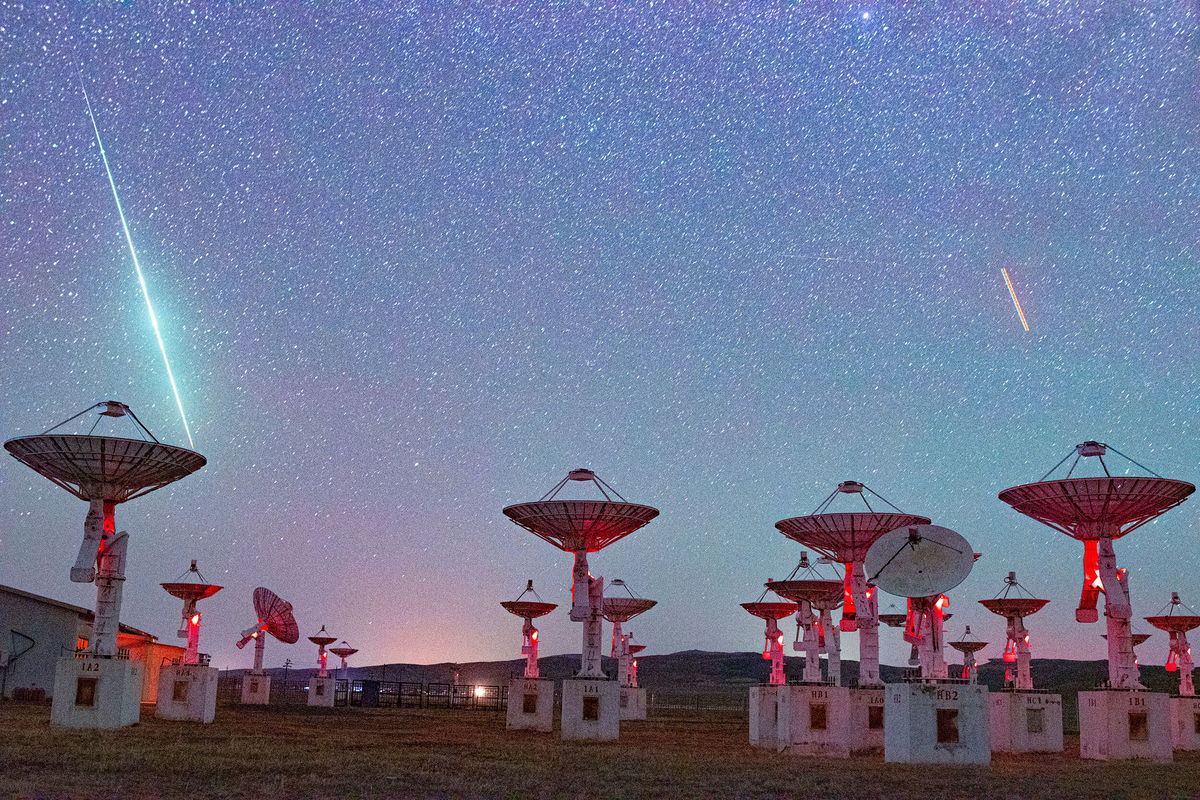When to look up at the sky for the Lyrid meteor shower

If you spot a shooting star in the night sky later this week
By Angie Orellana Hernandez and Ashley Strickland
If you spot a shooting star in the night sky later this week, it might be from the Lyrid meteor shower, which will reach its peak overnight around 12 a.m. ET on April 22, according to EarthSky.
Named after the Lyra constellation, the Lyrid meteor shower will end the “meteor drought,” the period between January and mid-April when no meteor showers light up the sky.
For those looking to get a glimpse at the Lyrids, they will be best viewed in the Northern Hemisphere, along the northeastern sky in the mid-northern latitudes, according to the American Meteor Society. This area encompasses North America.
Gazers should find an area away from city light pollution and lie back to get as much of the night sky in view. Wait 30 minutes for your eyes to adjust to the darkness to make meteors easier to spot, NASA recommends.
The Lyrids have been observed for 2,700 years, according to NASA. This shower tends to have bright and fast meteors and has reached a peak of as many as 100 meteors seen per hour.
However the moon this year will be in a waning gibbous phase, meaning more than half of it will be shining luminously, so you’ll only see the brightest meteors during the early morning of April 22, according to the American Meteor Society.
Want a better view? Try between late in the evening of April 22 and dawn of April 23 to get another look at the meteor shower under clearer conditions. Lyrids are commonly known to have unpredictable surges, so be prepared for unexpected outbursts, according to EarthSky.
Watchers should also keep an eye out for fireballs or glowing dust trails that meteors leave behind.
This shower will remain active until April 29.
After the Lyrids, there are 10 meteor showers that peak in 2022. Here’s a list of the remaining showers to watch for this year:
- Eta Aquariids: May 4 to 5
- Southern delta Aquariids: July 29 to 30
- Alpha Capricornids: July 30 to 31
- Perseids: August 11 to 12
- Orionids: October 20 to 21
- Southern Taurids: November 4 to 5
- Northern Taurids: November 11 to 12
- Leonids: November 17 to 18
- Geminids: December 13 to 14
- Ursids: December 21 to 22
Lunar and solar eclipses
Following the Lyrids, the celestial show will continue on April 30, when a partial solar eclipse occurs. The event can be seen by those in southern South America, the southeastern Pacific Ocean and the Antarctic peninsula, according to The Old Farmer’s Almanac. Another partial solar eclipse on October 25 will be visible to those in Greenland, Iceland, Europe, northeastern Africa, the Middle East, western Asia, India and western China.
Neither of the partial solar eclipses will be visible from North America.
Partial solar eclipses occur when the moon passes in front of the sun but only blocks some of its light. Be sure to wear proper eclipse glasses to safely view solar eclipses, as the sun’s light can be damaging to the eye.
There will also be two total lunar eclipses in 2022.
A total lunar eclipse will be visible to those in Europe, Africa, South America and North America (except for those in northwestern regions) between 9:31 p.m. ET on May 15 and 2:52 a.m. ET on May 16.
Another total lunar eclipse will also be on display for those in Asia, Australia, the Pacific, South America and North America on November 8 between 3:01 a.m. ET and 8:58 a.m. ET — but the moon will be setting for those in eastern regions of North America.
A lunar eclipse can occur only during a full moon when the sun, Earth and moon align, and the moon passes into Earth’s shadow. Earth casts two shadows on the moon during the eclipse. The penumbra is the partial outer shadow, and the umbra is the full, dark shadow.
When the full moon moves into Earth’s shadow, it darkens, but it won’t disappear. Sunlight passing through Earth’s atmosphere lights the moon in a dramatic fashion, turning it red — which is why this event is often referred to as a “blood moon.”
Depending on the weather conditions in your area, the moon may appear rusty, brick-colored or blood red.
This color variability happens because blue light undergoes stronger atmospheric scattering, so red light will be the most dominant color highlighted as sunlight passes through our atmosphere and casts it onto the moon.
Full moons
There are eight full moons still to come in 2022, with two of them qualifying as supermoons. Here is a list of the remaining moons this year, according to the Farmers’ Almanac:
- May 16: Flower moon
- June 14: Strawberry moon
- July 13: Buck moon
- August 11: Sturgeon moon
- September 10: Harvest moon
- October 9: Hunter’s moon
- November 8: Beaver moon
- December 7: Cold moon
The-CNN-Wire
™ & © 2022 Cable News Network, Inc., a WarnerMedia Company. All rights reserved.
